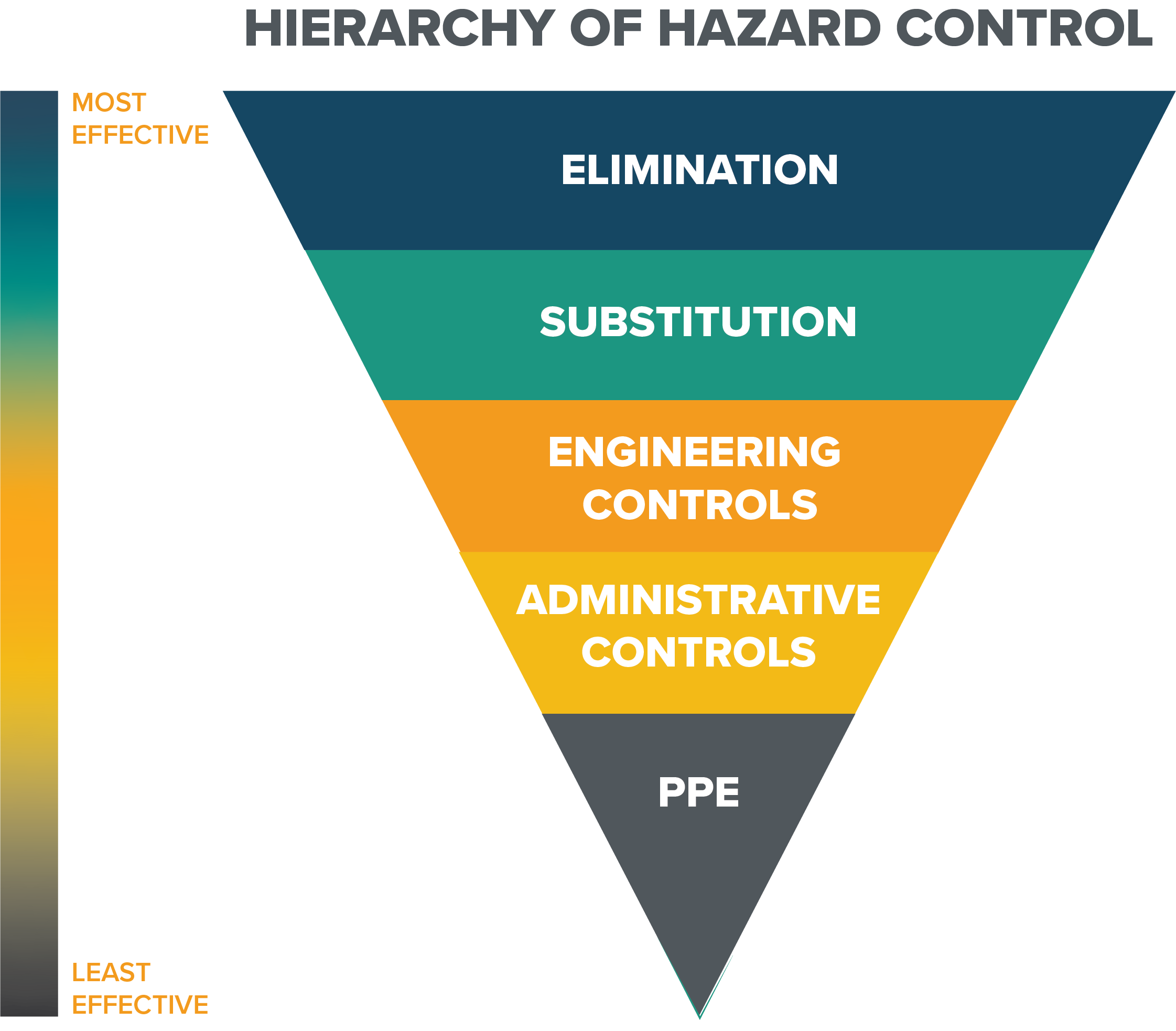[et_pb_section fb_built=”1″ _builder_version=”3.22.3″ custom_padding=”23px||0px|||”][et_pb_row custom_padding=”5px||0px|||” custom_margin=”-2px|auto|-86px|auto||” _builder_version=”3.24.1″ background_size=”initial” background_position=”top_left” background_repeat=”repeat” min_height=”2408px”][et_pb_column type=”4_4″ _builder_version=”3.0.47″][et_pb_text _builder_version=”3.15″ custom_margin=”-2px|||||”]
Respiratory Protection Hierarchy of Controls
Respiratory protection is an essential component of any functioning safety management system. Airborne contaminants (harmful dusts, fogs, fumes, mists, gases, smokes, sprays, or vapors) can lead to serious respiratory diseases such as silicosis, mesothelioma, lung cancer, and much more. Respiratory protection consistently makes the list of Top 10 OSHA Violations for the year with over 3,100 total citations for the 2018 fiscal year.
Building an effective program for respiratory protection goes far beyond providing respirators for employees and hanging signs in the workplace. Designing the best solution for the exposure requires working through the hierarchy of controls to first understand what exposures can be eliminated. After working through each component, if the exposure still exists, then Personal Protective Equipment will be necessary.
[/et_pb_text][et_pb_image src=”/wp-content/uploads/2018/11/Hierarchy-of-Hazard-Control@4x.png” align_tablet=”center” align_last_edited=”on|desktop” _builder_version=”3.23″][/et_pb_image][et_pb_text _builder_version=”3.15″]Johnathan Back, director of the NIOSH’s Prevention through Design Initiative (PtD) says, “you can’t eliminate every hazard, but the closer you can get to the top, the closer you can reach the ideal and make people healthier and safer.”
To understand the process, let’s look at an example and walk through the hierarchy of controls for respiratory protection together.
Example of Hierarchy of Controls for Respiratory Protection
Example situation: A bearing manufacturer uses an acid mixture to clean their bearings before packaging and shipping. The acid mixture emits harmful fumes, can cause burns to skin and eyes,
Elimination: Remove the Hazard
The manufacturer could determine a way to cleaning the bearings with out using the acid mixture. Instead only using the other components of the mixture or by doing a manual cleaning by employees.
Substitution: Replace the Hazard with a Less Dangerous Substitute
The manufacturer could test other cleaning solutions including those with natural ingredients like citric acid or other non-harmful chemicals to mitigate the hazard to workers.
Engineering controls: Isolate People from the Hazard
Instead of having the employees handle the bearings during the cleaning, the manufacturer explores using a conveyor fed cleaning machine to spray the bearings with the cleaning solution. Another engineering control would be to install ventilation to draw the fumes away from the employee’s breathing area.
Administrative controls: Change the Way People Work
The company should train their employees regarding the hazards of the acid solution as well in the proper and safe application of the solution during the cleaning process. The containers should be properly marked to warn those that encounter them are aware of the hazards. Signage around the area of the cleaning should be implemented to aid in the safe use of the chemical.
PPE: Protect the Worker with Personal Protective Equipment
If the hazard persists through all other controls the last resort is personal protective equipment. The chemical manufacturer should give guidance as to the PPE their products requires for safe use. A job hazard or PPE analysis should be performed by the bearing manufacturer to ensure that the proper measures are taken to protect their employees.
[/et_pb_text][et_pb_text _builder_version=”3.24.1″ min_height=”230px” custom_padding=”||0px|||”]
If you’re currently facing a hazard in your workplace, our team is here to help design a solution. Call or email our Safety Helpline to speak with a Safety Professional today.
888-70-Safety (888-707-2338) or email SafetyHelpline@Optimum-USA.com
[/et_pb_text][/et_pb_column][/et_pb_row][/et_pb_section]








